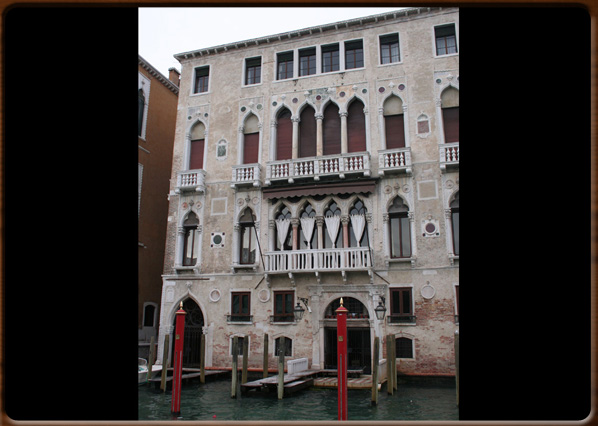
Palazzo Barbaro -Curtis, 1420 c., on the Canal Grande.

Pazzo Barbaro, on the right, in 1690 c.

Medallion painted by G.B. Tiepolo for Barbaro family.



No video
Palazzo Barbaro, for centuries the home of Venetian Barbaro family, is a noble edifice standing on the Canal Grande near the Accademia Bridge.
This palace consists of two distinct sections: on the left a building in the Gothic style from the first half of the 1400s and an annex belonging to another era in the Baroque style, designed by Antonio Gaspari. This more recent building has a large ballroom adorned with paintings by Ricci and Piazzetta, plus a well-stocked library.
The last of the Barbaro family died in the 1800s, leaving no heirs and so the palace was sold to some speculators, who stripped it of some of its famous paintings and furniture. In 1885 the Curtis family of Boston saved the palace from ruin by buying it and starting major restoration work, then quickly turning it into centre of artistic and intellectual life. It was frequented by American and European artists like Sargent, Whistler, Zorn, Browning, Henry James and Claude Monet.
In 1887 Henry James stayed there when writing Carteggio Aspern, his famous psychological novel set in Venice.
1300 - 1400 - S. MARCO - rev. 0.1.5